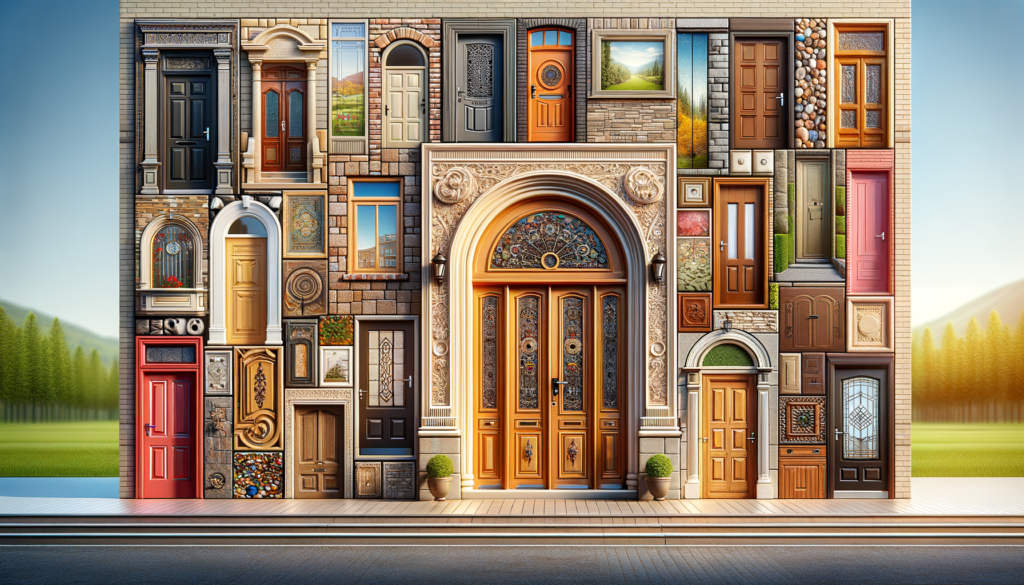The Online Business Blog

Exploring the World of Exterior Front Entry Doors
Understanding Exterior Front Entry Doors
Exterior front entry doors serve as the welcoming face of your home, playing a crucial role in both aesthetics and security. These doors are not just a passageway but a statement of style and personality. When selecting a front door, homeowners often consider factors such as material, design, and durability. Materials commonly used include wood, steel, and fiberglass, each offering unique benefits. Wood doors are known for their classic appeal and can be customized with various finishes and designs. Steel doors, on the other hand, provide exceptional security and are often more affordable. Fiberglass doors combine the aesthetics of wood with the durability of steel, making them a popular choice among homeowners.
Choosing the right design is also essential. From traditional to modern styles, the options are vast. A door with sidelights or a transom can enhance the entryway’s appearance, allowing more natural light to enter the home. Additionally, considering energy efficiency is important. Many doors come with insulated cores and weather-resistant seals to help maintain indoor temperatures, which can lead to energy savings over time.
In summary, exterior front entry doors are more than just functional elements; they are integral to your home’s curb appeal and security. By understanding the different materials and styles available, homeowners can choose a door that complements their home’s architecture while meeting their practical needs.
Features of Front Entry Doors
Front entry doors are designed to provide both security and aesthetic appeal. These doors are often the first impression of a home, making their design and functionality crucial. Key features to consider include the door’s construction, security elements, and additional accessories.
Construction is a critical aspect. Solid wood doors offer a timeless look and can be crafted with intricate designs. However, they require regular maintenance to prevent weather damage. Steel doors are renowned for their security, often featuring reinforced cores and advanced locking mechanisms. Fiberglass doors are gaining popularity due to their versatile designs and low maintenance requirements. They can mimic the look of wood while offering better resistance to dents and scratches.
Security features are paramount in front entry doors. Many modern doors come equipped with multi-point locking systems, which provide enhanced protection against forced entry. Additionally, smart locks are becoming increasingly common, allowing homeowners to control access remotely via smartphone apps. Peepholes and security cameras integrated into the door can also add an extra layer of safety.
Accessories such as decorative glass panels, sidelights, and transoms can further enhance the door’s appearance. These elements not only add to the visual appeal but also allow natural light to brighten the entryway. When selecting front entry doors, considering these features ensures that the door meets both aesthetic and security needs.
Exploring Front Doors Prices
The cost of front doors can vary widely based on material, design, and additional features. Understanding these factors can help homeowners make informed decisions that align with their budget and preferences.
Material is a primary determinant of price. Wooden doors are generally more expensive due to their craftsmanship and the quality of wood used. Custom designs or exotic wood types can further increase the cost. Steel doors are typically more affordable, offering excellent security and durability at a lower price point. Fiberglass doors fall in between, providing a balance of aesthetics and cost-efficiency.
Design complexity also influences pricing. Simple, plain doors are less costly compared to those with intricate carvings, glass inserts, or custom finishes. Adding features such as sidelights or transoms can significantly increase the overall price. Additionally, energy-efficient doors with insulated cores and weatherproof seals might come at a higher initial cost but can lead to long-term savings on energy bills.
Installation costs should not be overlooked. Professional installation ensures the door is fitted correctly, providing optimal security and insulation. While this adds to the upfront cost, it can prevent future issues, such as drafts or misalignment, saving money on repairs.
In conclusion, while front doors prices can vary, investing in a quality door that suits your needs and complements your home is worthwhile. By considering materials, design, and installation, homeowners can find a door that fits their budget and enhances their home’s entrance.









